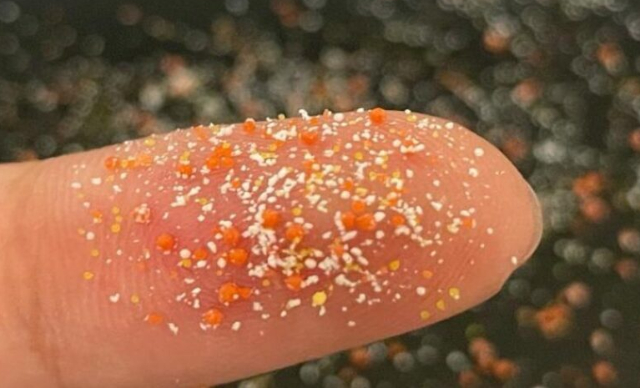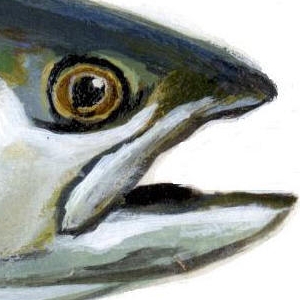We’ve been hearing a lot about ‘microplastics’ in the mainstream media, the scientific literature, and the social media lately. I’ve held off commenting on microplastics until I had a chance to research the issue thoroughly. But I’ve recently been shocked to action!

My unofficial Research Assistant, sister Erin, handed me a story with a rather shocking headline yesterday. She didn’t say a word – just wanted to see my reaction when I read it:
“Whales and Dolphins Are Now Partly Made of Plastic: Study”
I had to read it twice to be sure I had read it correctly.
Then she handed me another story. Now grinning mischievously:
“No Matter What You Eat, You’re Probably Eating Plastic”
My reaction
I guess Erin was satisfied with my reaction. For entertainment purposes, at least. “Calm down!” she said, with a hint of laughter in her voice. “You can probably turn this into one heck of a post!”
I hope she was right.
Here goes…
The Newsweek story topped with the first headline above examines a new Duke University study that reveals a shocking reality. Microplastics have invaded virtually every living creature and plant in our seas and oceans.
What are microplastics?
Simply put, microplastics are to plastic waste (that find its way into the waters of the Earth) as sand is to rocks ground down by eons of wave and tide action. You can’t see them. They’re just too small. Microscopic, but not molecular in scale.
They are getting into everything that comes in contact with water, and from there into everything that lives in the water. Or drinks it.
But the problem is, microplastics are not just going through the digestive tracts of just about every living creature, they’re being absorbed – and deposited in fatty tissues and elsewhere. With as yet little-understood consequences.
“Microscopic plastic particles have been found in the fats and lungs of two-thirds of the marine mammals [surveyed] in a graduate student’s study of ocean microplastics. The presence of polymer particles and fibers in these animals suggests that microplastics can travel out of the digestive tract and lodge in the tissues,” an abstract of the Duke study reports. “Harms that embedded microplastics might cause to marine mammals are yet to be determined, but plastics have been implicated by other studies as possible hormone mimics and endocrine disruptors.”
How may microplastics harm us?
Potentially, they can cause both chemical and mechanical damage to our innards. The microplastic bits studies by the Duke team were between 2 and 5 times the width of a human hair. Capable of tearing and abrading tissues, according to team spokesperson and grad student said Greg Merrill Jr.
“Now that we know plastic is in these tissues, we’re looking at what the metabolic impact might be,” Merrill said. For the next stage of his dissertation research, Merrill will use cell lines grown from biopsied whale tissue, gathered from Alaska, North Carolina and California, to run toxicology tests on their plastic particles.
But there’s the rub…
… As Hamlet said, confronting an undeniable truth: We’re mammals, too. And we eat fish and other seafoods. And most of the non-mammal sea creatures have also been studied and found to be riddled with microplastics.
A 2022 paper in Nature Communications estimated, based on known concentrations of microplastics off the Pacific Coast of California, [estimated] that a filter-feeding blue whale might be gulping down 95 pounds of plastic waste per day as it catches tiny creatures in the water column. Whales and dolphins that prey on fish and other larger organisms also might be acquiring accumulated plastic in the animals they eat, Merrill told the abstract author.
Not to mention the historic imp0lications… “For me, this just underscores the ubiquity of ocean plastics and the scale of this problem,” Merrill said. “Some of these samples date back to 2001. Like, this has been happening for at least 20 years.”
So what does it mean for us?
Enter, headline number two. From Delish.com:
“Researchers at the Ocean Conservancy and University of Toronto tested 16 protein types, including seafood, poultry, pork, beef, tofu, and three plant-based meat alternatives, and found that 88 percent of them contained microplastics.”
And the Google search returns on the topic just run on and on…
SELF.com
Microplastics Have Been Found In Human Blood And Lungs—Should We Be Worried?
Bon Appétit
How Much Microplastic Am I Eating – And Is There Any Way to Avoid It?
Reuters
Visualising the amount of microplastic we eat
TIME Magazine
Americans Eat And Inhale Over 70,000 Plastic Particles Each Year
Science News
Microplastics Are In Our bodies. Here’s Why We Don’t Know The Health Risks
…And the links go on for pages and pages thereafter…
My (belated?) take
Yes! Microplastics are definitely something we need to take seriously – to be worried about. We need to know a lot more about the effects of these materials on the environment and on our bodies – and the sooner, the better!
~ Maggie J.

